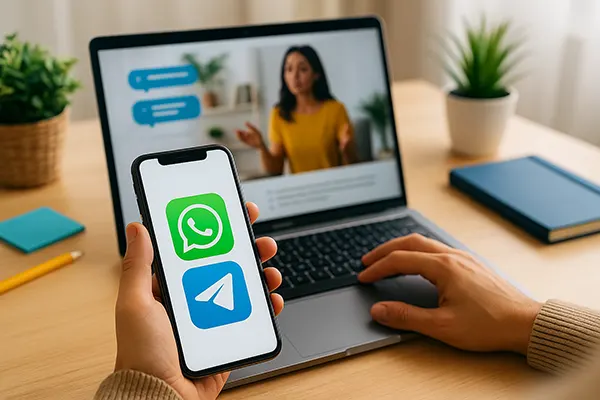How to Launch and Scale Micro-Courses on Telegram and WhatsApp

In 2025, micro-learning has become one of the most effective ways to deliver educational content. With Telegram and WhatsApp offering automation, multimedia sharing, and group management tools, launching a micro-course no longer requires a complex system. Educators, coaches, and businesses can now reach thousands of learners directly on their phones. Let’s explore how to build, scale, and sustain micro-courses through these two messaging ecosystems.
Understanding the Micro-Course Concept
A micro-course is a short, structured educational experience that focuses on one specific skill or topic. Lessons are designed to take only a few minutes a day, making them ideal for mobile-first users. In Telegram and WhatsApp, micro-courses are delivered via text, voice notes, or video snippets, supported by interactive quizzes or calls-to-action.
The primary strength of micro-courses lies in simplicity. Learners don’t need to download an extra app or register on a website. They receive lessons directly in their favourite messenger, where they already spend time. This increases completion rates and keeps engagement levels consistently high.
As of 2025, creators use Telegram bots, WhatsApp Business API, and no-code tools like ManyChat or SendPulse to automate course delivery. These tools allow scheduling content, tracking user activity, and even issuing certificates automatically.
Key Elements of an Effective Micro-Course
Successful micro-courses have a clear learning objective. Before writing lessons, creators must define what learners will achieve by the end of the course. This objective determines the structure, tone, and type of media used.
Next comes the lesson design. Each module should be short (1–3 minutes to complete) and end with a small task — for instance, answering a question or completing a quick exercise. This approach reinforces retention and transforms passive viewing into active participation.
Finally, consistency matters. Sending lessons at the same time each day creates a habit. Whether through WhatsApp broadcast lists or Telegram channels, regular scheduling strengthens trust and helps learners stay motivated until the final lesson.
Launching Your First Micro-Course
Before launching, identify your target audience. Are they students, professionals, or business owners? Each group has unique content preferences and engagement habits. Define your course length — typically 5 to 10 days is ideal for maintaining interest without overwhelming learners.
Then, prepare content in advance. Plan scripts, visuals, and tasks. Use Google Sheets or Notion to create a timeline for your lessons. Each message should deliver one clear idea and be formatted for mobile reading — short sentences, emojis where appropriate, and simple language.
Once content is ready, connect an automation tool. Telegram users can build bots using BotFather or FlowXO, while WhatsApp educators can use Business API integrations through Twilio, WATI, or SendPulse. These systems automate enrolment, lesson delivery, and follow-up reminders.
Testing and Feedback
Start with a pilot version of your micro-course. Invite a small group of learners and collect feedback on content clarity, pacing, and technical experience. Early testers help identify issues that could disrupt engagement later.
Analyse the data: check message open rates, response frequency, and drop-off points. Telegram analytics or integrated dashboards in automation tools offer valuable insights about learner behaviour.
After the test, adjust your content. Simplify complex lessons, fix broken links, and optimise delivery timing. The goal is to make the learning experience smooth and enjoyable from the first to the last message.

Scaling Micro-Courses Efficiently
Once a course proves effective, scaling becomes the next step. Telegram allows unlimited subscribers in public channels, while WhatsApp supports group broadcasts with segmented lists. Both systems can handle thousands of learners through automation and scheduled posts.
Monetisation is often introduced at this stage. Educators may add premium tiers with exclusive content, one-on-one consultations, or community chats. Payment gateways like Stripe, PayPal, or local systems can be integrated via chatbots or embedded links.
To maintain growth, content updates and marketing campaigns are essential. Cross-promote your micro-courses on social media, newsletters, or even in other chat groups. Encourage word-of-mouth by offering referral bonuses or certificates for course completion.
Maintaining Quality and Trust
As you expand, uphold the credibility of your educational brand. Always provide verified information and cite your sources. Learners in 2025 are highly sensitive to misinformation, especially in professional or skill-based training.
Regularly audit your course materials to keep them relevant. New tools, policies, and social media trends can affect the context of your lessons. Updating them every few months ensures that your course remains accurate and valuable.
Lastly, nurture the community that forms around your courses. Active discussion groups, Q&A sessions, or live feedback calls make learners feel part of a larger educational journey — one that motivates them to return for future micro-courses.
